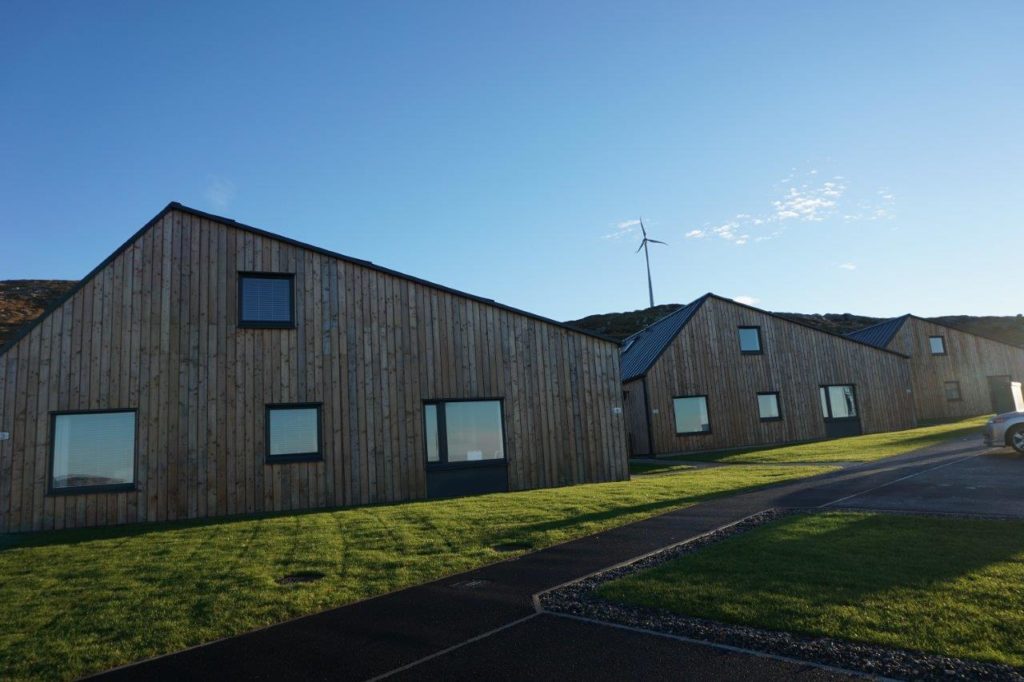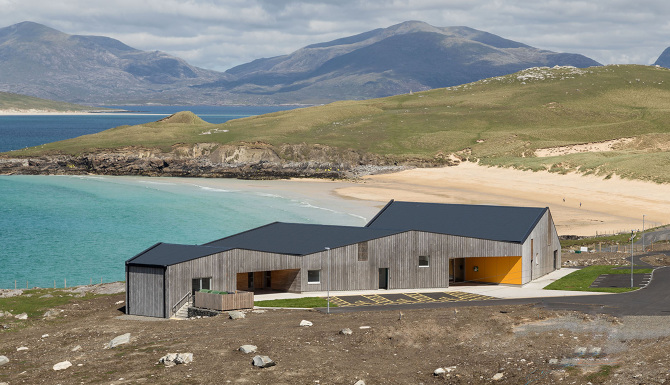Linda Armstrong, West Harris Trust
As the West Harris Trust approaches its tenth anniversary in 2020, a lot can be said for the positive population change created in the area. Since its inception, the sustainable aims of; creating housing and employment opportunities, providing renewable energy and educating the community about the culture, heritage and history of the area have made West Harris a more sustainable place to live.
Drawing on data from the 2001 census, the Scottish Islands Federation notes that, “the Western Isles as a whole have suffered the worst rates of depopulation over the last decade – losing more than 3,000 people”. However, since 2010 the West Harris Trust has been working hard to reverse this trend, and since purchasing the land in 2010 there has been a 20% increase in population in West Harris.
Prior to the estate purchase, it was identified that 35% of houses in West Harris were either holiday homes or self-catering cottages. The Trust recognised that this housing imbalance had to be addressed.
Soon after the purchase of the estate, several affordable house plots were made available for purchase. These were offered significantly below market value, but with the inclusion of a residency burden meaning that the purchaser and future owners would be required to live permanently in the property. The plots were subject to an application process, with applicants being scored on factors such as whether they had children, experience of living in a rural area and job creation. The plots have had limited success, with four having been developed/allocated. The high cost of building in the area has meant that despite the low cost of the land, few young families have been in a position to develop.

Prior to the estate purchase, there were no social properties to rent in the area and few properties for long term private rental, with most preferring to target the lucrative self-catering market. Through partnering with Hebridean Housing Partnership, six affordable homes for rent have been created at Pairc Niseaboist, attracting young families to move to the area. A further four properties are currently being developed, this time to be offered for shared equity.
The Community Enterprise Centre Talla na Mara, located across from the new housing development, provides space for events such as concerts and film screenings, weddings, a restaurant, four open studios and an art gallery. Talla na Mara has benefitted the local community by providing a hub for engaging residents and tourists, business space for local people and a viable income for the Trust.

The Trust has developed several renewable energy projects, including three wind turbines with a joint capacity of 158kW and 100Kw hydro scheme. A 100Kw wind turbine supplies power to Talla na Mara and the six houses at Pairc Niseaboist, with approximately 55% of energy consumed on site coming from the turbine.
As a result of the above developments, the population of West Harris has increased from 119 in 2012 to 151 in 2019, with the number of preschool aged children increasing from one to seven and the number of under 18s living in the area currently standing at twenty-two.
The Trust has set a target of reaching a population of 170 by 2020, which we hope will be achieved through the completion of the further four homes being built for shared equity.
With positive social and economic change, the Trust is achieving repopulation in the area, despite the steep decline in population in the Western Isles as a whole. Watch this short video to learn more about the work of the West Harris Trust.

We have been to harris started in 2012 and every year till 2019 did not book for 2020 due to other commitments . I was in the building trade and if i had visited in my younger years would have moved with family. Coming again next year have booked already.
We have seen a lot of changes since we first came, we have got to know a few people on harris and have become good friends